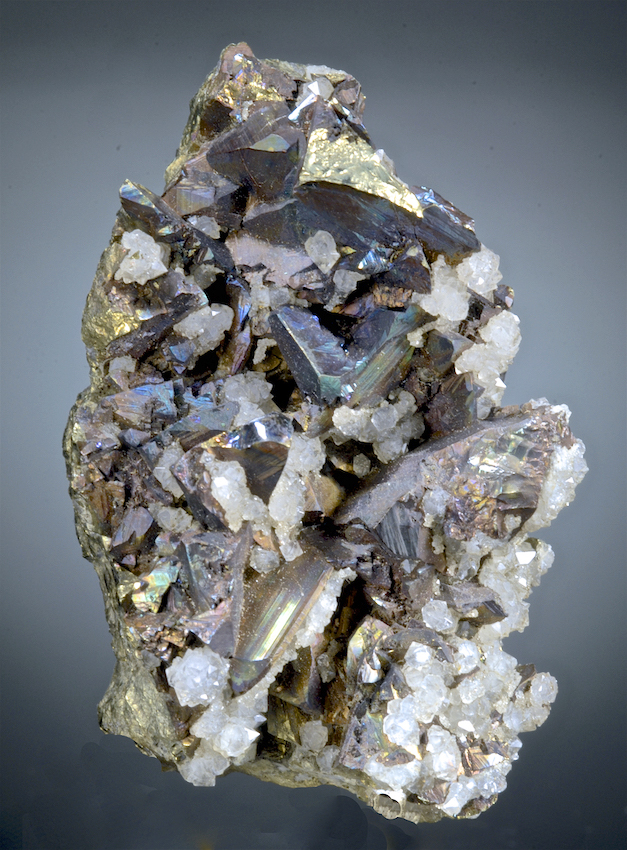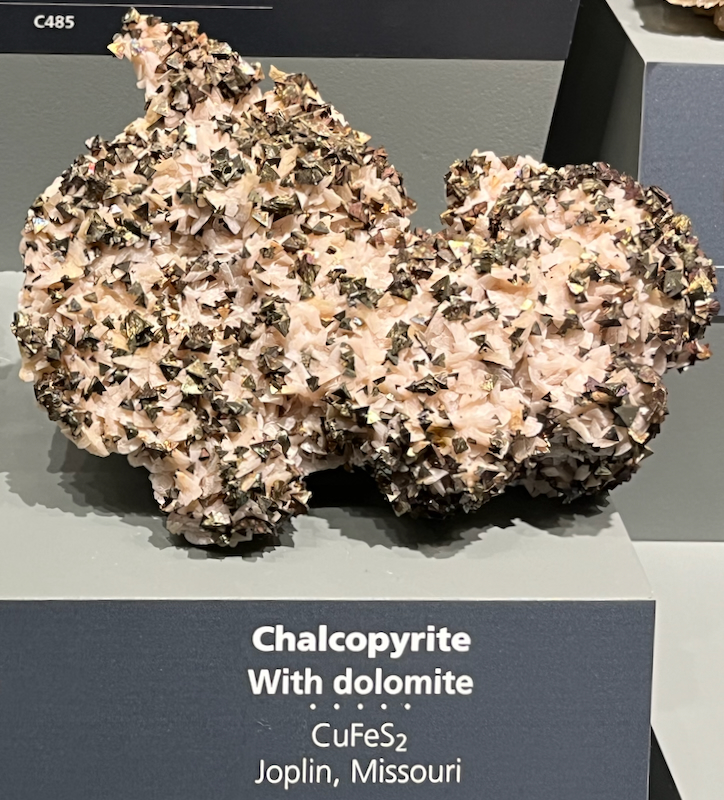Chalcopyrite
People commonly call colorful chalcopyrite “peacock ore” because when it’s exposed to air, the surface of chalcopyrite crystals turns from gold colored to a beautiful iridescent rainbow color. (The word “iridescent” comes from the Latin word for rainbow.) If chalcopyrite is exposed to acid, on the other hand…, the rainbow can be way more intense. In either case, the rainbow itself is made up of an extremely thin coating of other minerals, which can include azurite and malachite. Before it turns rainbow colored, it can be hard to tell it apart from pyrite (“fool’s gold”), and that’s not too surprising, since it’s basically pyrite (FeS2) with some copper added to it (CuFeS2). In fact, “chalco” comes from the Greek word for copper, so its name means “copper pyrite.” Although it doesn’t have copper’s, well, coppery color (pinkish tan), chalcopyrite is the most common ore that’s melted down to produce copper.
| Formula | Group or Type | Shape | Hardness | Specific Gravity | Streak | Luster |
|---|---|---|---|---|---|---|
| CuFeS2 | — | Tetragonal | 3.5–4 | 4.1–4.3 | Greenish black | Metallic |


